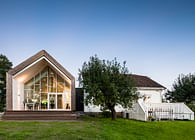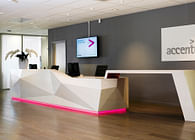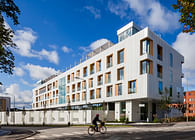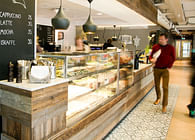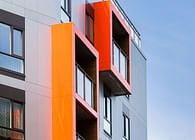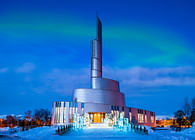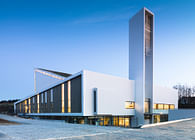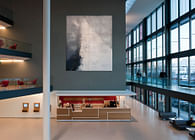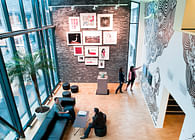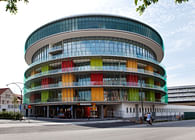
Oslo, NO
Oslo’s new ‘Central Park’
- The most important park development in Oslo since the Palace gardens were opened in the mid-19th Century.
Brannskjær Park will be built on Oslo’s most exciting and important post-industrial waterfront site, Filipstad, and will be by far the largest publically accessible open space within the Fjord City Plan.
LINK Landskap’s sketch plan for this significant new public park will be used by the site’s owner, The Port Authority (Oslo Havn KF), to illustrate their aims and ambitions for the site and as a basis for future design development.
The original landscape character of the area is reflected in the park’s name, Brannskjær Park. The word ‘Brannskjær’ describes a series of rocky outcrops, or islets, off the coast of Philipstad (known today as: Filipstad). These rocky outcrops were buried as part of an extension of the port facilities in the mid-19th Century.
Filipstad has an important industrial history as one of Norway’s most important hubs for the import of groceries. It also has a history of recreational use, with sea baths and diving towers located in the area. LINK Landskap’s proposal for Brannskjær Park is grounded in these two parallel histories, the area’s original landscape character, and its future role as a significant public open space located directly adjacent to Oslo’s Central Business District (CBD).
The Landscape Plan for Brannskjær Park is also placed within a global context of transformed post-industrial waterfront sites, through a series of precedent projects. Pirrama Park in Sydney, Australia, and Iceland Wharf and sea baths in Copenhagen, Denmark, are both well-known projects that can help place Brannskjær Park in context with respect to widely recognised landscape and urban design principles relating to site programming and human-scale.
One of the main principles behind the landscape plan is preservation and strengthening of the existing quay edge, which creates an important axis (sightline) between Hans Jægers Quarter and Bygdøy. This is achieved by relocating a section of reclaimed land, which today forms a distinctive isthmus to the south of the site. The removal and recloation on-site of this land mass allows for the creation of a new island (Nye Brannskjær) and canal as well as a new beach. The site’s endemic landscape character is, thereby, re-established in a series of islets by manipulating existing landscape features.
Focus on the edge
The site currently has a 750m long water’s edge. LINK Landskap has developed an experience-based approach to cultivating a rich relationship between the park, its users and the fjord landscape at Filipstad. This focus on the creation of a landscape framework providing a series of unique experiential qualities will ensure Oslo’s inhabitants get a park that will live up to its role as Oslo’s most important publically accessible waterfront open space located directly adjacent to the CBD.
The Landscape Plan retains two existing concrete quays, both as historic references and so as to ensure the maintenance of their maritime programmes on the site. Future ferry connections to the CBD and Oslo Fjord’s archipelago, in addition to selected moorings for historic ships, will ensure the site’s maritime character is celebrated well into the future.
A new timber wharf, parallel with the existing quay, will create opportunities for ‘staying’ by the water and provide the necessary facilities for short-term moorings for small vessels.
The Beach (Stranden) is an area where Oslo’s inhabitants will be able to enjoy sun-filled days by the ocean in the middle of the city centre. New Brannskjær (Nye Brannskjær), with its main staircase, will provide a myriad of opportunities for sunbathing, and a landscape of concrete block elements will create small pockets secluded from wind and noise for sunbaking with uninterrupted views out over the Fjord.
The Harbourfront Promenade
A harbourfront promenade and urban plaza will facilitate a connection between Filipstad’s new urban development areas and the Fjord. The design for the plaza activates important height differences by creating vibrant areas for public life by the water. A large fountain will create a unique identity for the plaza as well as providing opportunities for water play.
A new timber terrain located adjacent to the Harbourfront promenade will function as a mediating element, creating variation and interest in a zone of transition between city and fjord. This timber terrain will offer areas where people can safely sit, mingle and relax on raised planes with unhindered views out over the Fjord.
The Playground
A new school is proposed between Brannskjær Park and Color Line’s international ferry terminal. This presents unique opportunities for the Landscape Plan. The playground has, therefore, been designed so as to accommodate the school’s requirements regarding play and outdoor gathering spaces while ensuring the playground makes an integrated and refined contribution to the public domain at Filipstad.
Activity plaza and laneway
Brannskjærgata (Brannskjær Street) will provide vehicular access to a new world-class hotel, exclusive waterfront apartments and a new school. An activity plaza – including a playground, basketball and beach volleyball courts, and a skate park – will be located directly adjacent to Brannskjærgata, creating a vibrant shared zone, characterised by a mix of contact between different user groups at the park’s northern border.
Grassy planes under tall trees
Solplenen is a series of large, flat and gently undulating planes of manicured grass situated under tall trees, and framed by a network of generously wide footpaths. These footpaths bind together the site’s two existing quays in a network of lively thoroughfares. This creating a series of landscape rooms, as well as contributing to the establishment of a unique character for Brannskjær Park, influenced by a pragmatic approach to the site’s historic use as a port and its future role as a catalyst for contact between the city and the fjord.
Sea Baths
A network of new sea baths will offer new contact with the Fjord – right in the middle of the city centre! The sea baths will become an exciting destination in its own right during the summer months where people can bathe, swim laps, promenade, dive, sunbake and go snorkelling.
The sea baths have been designed as a stimulating recreational area reflecting the overall goals for Brannskjær Park. Swimming options are provided for all age and user groups (young and old, recreational and exercise). There are three protected baths – one enclosed shallow bath for infants and young children; one semi-shallow bath with a wheelchair ramp; and one 50m long bath for lap swimming with an open bottom. In addition, there are enclosed and semi-enclosed areas where people can swim in the fjord within safe proximity of the sea baths. A diving tower and sun bench is located at the park’s outer edge, with views out over open water.
Status: Unbuilt
Location: Oslo, NO
Firm Role: Landscape architects
